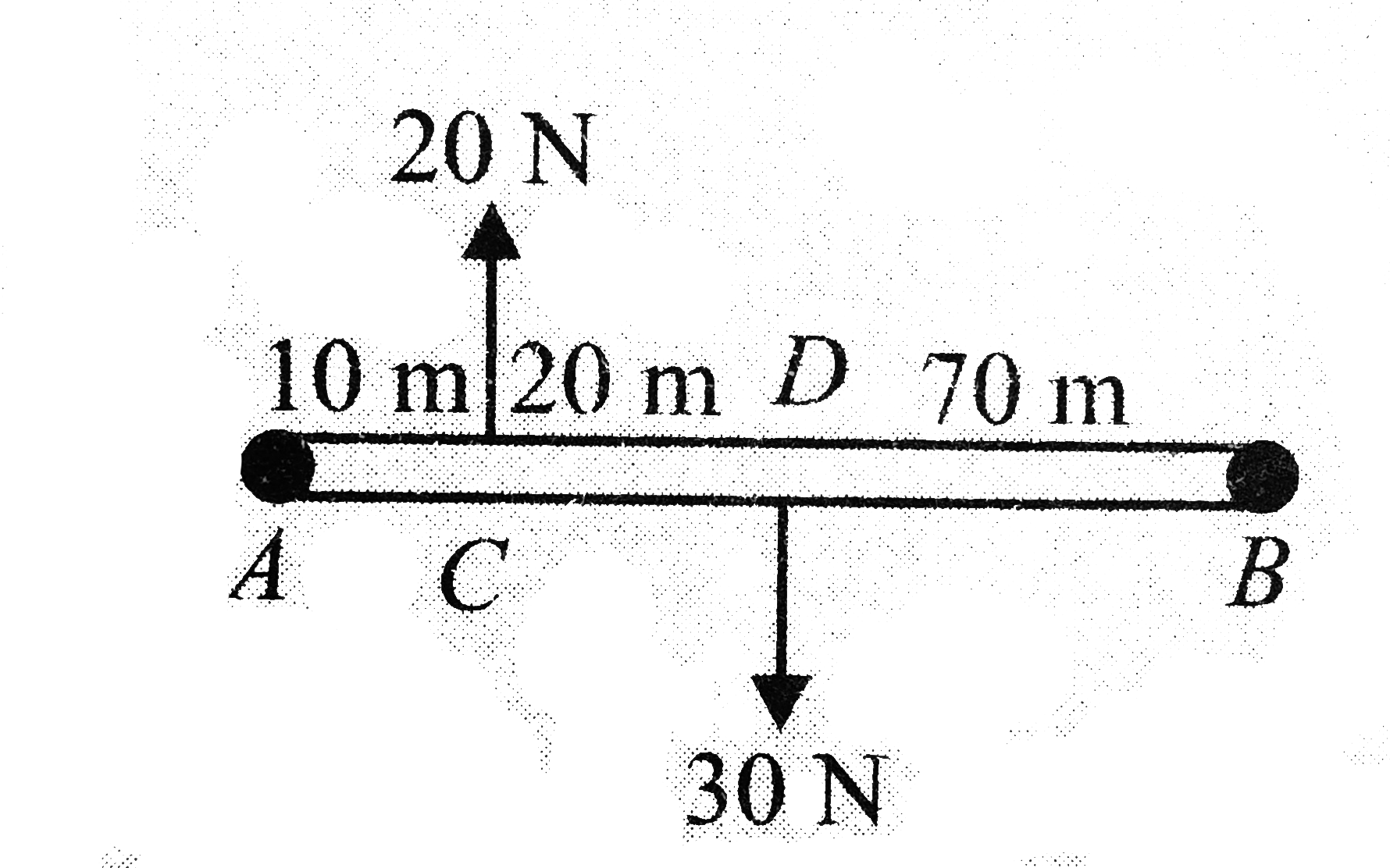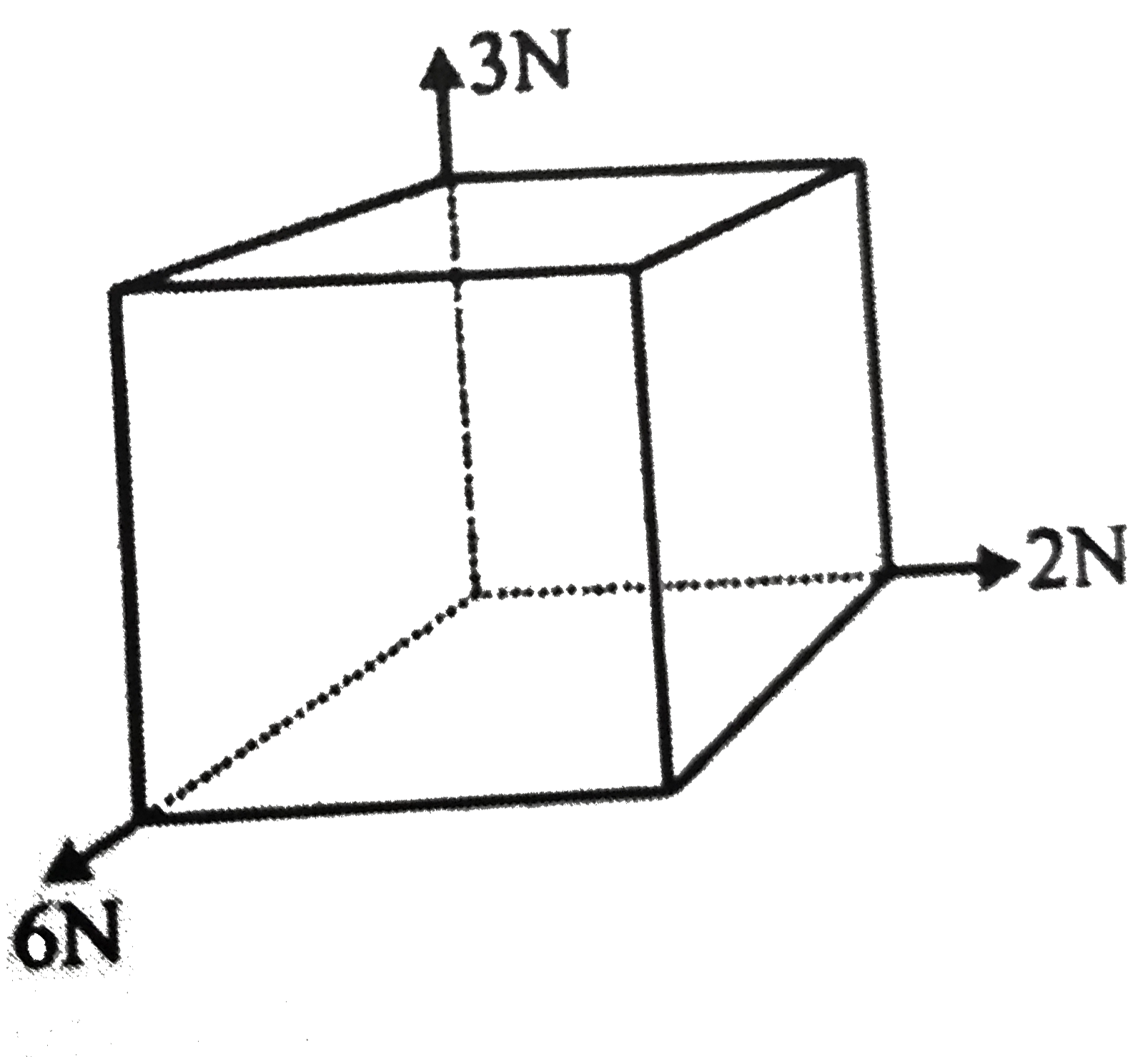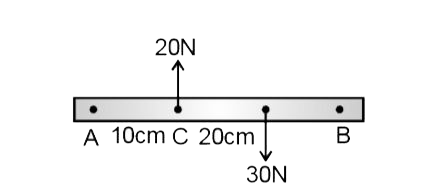When three forces of 50N,30Nand15N act on body, then the boy is
At rest
Moving with a uniform velocity
In equilibrium
Moving with an acceleration
The correct Answer is:D
To solve the problem of determining the state of a body acted upon by three forces of 50 N, 30 N, and 15 N, we will follow these steps:
Step 1: Identify the Forces
We have three forces acting on a body:
- F1=50N
- F2=30N
- F3=15N
Step 2: Apply the Triangle Inequality Theorem
To determine if the body is in equilibrium, we need to check if these forces can form a closed triangle. According to the triangle inequality theorem, for any three sides a,b,c of a triangle, the following must hold:
1. a+b>c
2. a+c>b
3. b+c>a
Step 3: Check the Inequalities
Let's assign the forces:
- a=50N
- b=30N
- c=15N
Now, we check the inequalities:
1. 30+15=45 which is not greater than 50 (fails)
2. 50+15=65 which is greater than 30 (succeeds)
3. 50+30=80 which is greater than 15 (succeeds)
Since the first inequality fails, the forces cannot form a triangle.
Step 4: Conclusion on Net Force
Since the forces do not satisfy the triangle inequality, they cannot be in equilibrium. Therefore, the net force acting on the body is not zero.
Step 5: Determine the State of Motion
If the net force is not zero, the body will not be at rest or moving with uniform velocity. Instead, it will be moving with an acceleration due to the unbalanced forces acting on it.
Final Answer
The body is moving with an acceleration.
---
We have three forces acting on a body:
- F1=50N
- F2=30N
- F3=15N
To determine if the body is in equilibrium, we need to check if these forces can form a closed triangle. According to the triangle inequality theorem, for any three sides a,b,c of a triangle, the following must hold:
1. a+b>c
2. a+c>b
3. b+c>a
Let's assign the forces:
- a=50N
- b=30N
- c=15N
1. 30+15=45 which is not greater than 50 (fails)
2. 50+15=65 which is greater than 30 (succeeds)
3. 50+30=80 which is greater than 15 (succeeds)
Since the forces do not satisfy the triangle inequality, they cannot be in equilibrium. Therefore, the net force acting on the body is not zero.
If the net force is not zero, the body will not be at rest or moving with uniform velocity. Instead, it will be moving with an acceleration due to the unbalanced forces acting on it.
The body is moving with an acceleration.
Topper's Solved these Questions
- BOOK - A2ZCHAPTER - VECTORSEXERCISE - Resultant Of Vectors24videos
VECTORS
- BOOK - A2ZCHAPTER - VECTORSEXERCISE - Expressing Vectors In Unit Vector Notation22videos
VECTORS
- BOOK - A2ZCHAPTER - UNIT, DIMENSION AND ERROR ANALYSISEXERCISE - Chapter Test28videos
UNIT, DIMENSION AND ERROR ANALYSIS
- BOOK - A2ZCHAPTER - WAVES AND ACOUSTICSEXERCISE - Chapter Test30videos
WAVES AND ACOUSTICS
Similar Questions
Knowledge Check
- Question 1 - Select One
Two forces 10 N and 15 N are acting on a body then which cannot be the resultant of these two forces
A25 NB5 NC20 ND30 N - Question 2 - Select One
Determine the point of application of force, when forces of 20N and 30N are acting on rod as shown in figure.
 A70 mB80 mC60 mD50 m
A70 mB80 mC60 mD50 m - Question 3 - Select One
What will be the net force if two forces of 20N and 10 N are acting on a body in opposite directions?
A10 NB25 NC30 ND35 N
Two constant forces 4 N and 5 N act on a body in opposite directions. Find the resultant force on the body.
View SolutionThree forces of magnitudes 2N, 3N and 6N act at corners of a cube along three sides as shown in figure. Find the resultant of these forces in N.
 View Solution
View SolutionA body is under the action of two mutually perpendicular forces of 3 N and 4 N. The resultant force acting on the body is
View SolutionTwo forces of 12N and 8N act upon a body. The resultant force on the body maximum value of
View SolutionWhen a force of 1N acts on a body of mass 1 gram, the body receives an acceleration of
View Solution


